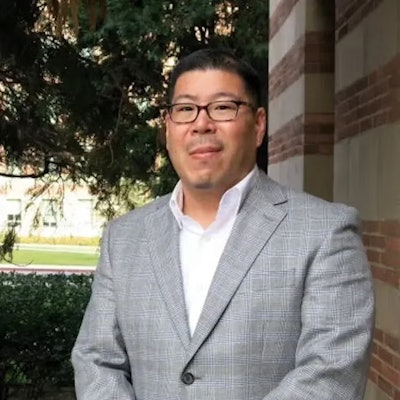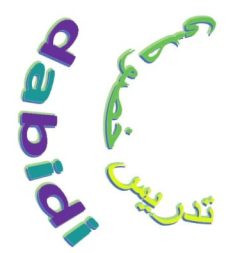W Dr. Robert Teranishihen President Joe Biden
Dr. Robert Teranishihen President Joe Biden
reestablished the White
House Initiative
on Asian Americans,
Native Hawaiians and
Pacific Islanders in 2021,
higher education was
one of its biggest focal
points.
For instance, in April
2024, the initiative hosted
the first-ever Asian
American, Native Hawaiian
and Pacific Islander
Higher Education Leadership
Development
Summit. The summit
– which drew faculty,
staff and students from
around the world – took
place at the University
of California, Berkeley. A
year prior, Berkeley had
been awarded its first
federal grant as an AANAPISI
– or Asian American
and Native American
Pacific Islander-Serving
Institutions.
Under Trump 2.0, the
White House Initiative
on Asian Americans,
Native Hawaiians and
Pacific Islanders – also
known as WHIAANHPI – is no more.
It became one of the many casualties
of the Trump administration’s crusade
against diversity, equity and inclusion
programs, or DEI.
Scholars say the dissolution of
WHIAANHIP is more than symbolic –
that it will lead to diminished resources
and attention for various issues
and challenges that confront students from the demographic the initiative was meant to serve.
“It is significant anytime there is an executive order that is specifically inclusive of the AANHPI population simply because it does not happen very often,” says Dr. Robert Teranishi, the Helen Chu Endowed Chair in Asian American Studies, and a professor of social science and comparative education at UCLA.
“I’m old enough to remember when it started,” says Dr. Julie J. Park, professor of education at the University of Maryland, College Park, in reference to when President Bill Clinton first established the initiative in 1999.
“I think the decision to dissolve it – unfortunately in this administration it’s not totally surprising since they’ve cut so many other things – but it’s really disappointing,” Park says. “I think we’ll have widespread consequences for the Asian American, Native Hawaiian and Pacific Islander communities.” Park listed issues such as poverty, census counting and mental health in the aforementioned communities that she says will now get less attention since the White House initiative disbanded.
“Anytime you put the White House
name on it, it amplifies it to another
level, so that was helpful in legitimizing the concerns that people have been talking about for years and years that don’t get a lot of attention,” Park says.
Dr. Pawan H. Dhingra, a professor of
Asian American and Pacific Islander
Studies at Amherst College, and immediate
past president of the Association
for Asian American Studies, raises similar
concerns.
“I believe they were helpful in thinking
about some of the lesser known
issues that affect Asian Americans,
Native Hawaiians and Pacific Islanders,”
Dhingra says, also listing mental
health and poverty, as well as bullying
in schools as examples. “What I always
appreciated about [the initiative] is
that they were trying to move the needle
on these issues that most others
aren’t going to be thinking about,” Dhingra
says.
But did WHIAANHPI actually move
the needle on the issues it says were
important? Dr. Julie J. Park
Dr. Julie J. Park
Diverse reached out to several members
of the 25-member WHIAANHPI
but was unable to secure a comment.
There could be a reason for the silence.
One former member of the initiative
told Diverse that commissioners “have
been warned to be careful of retaliation
by MAGA.” Thus, declining to comment
could be a protective measure
meant to stay out of the crosshairs of
the Trump administration, which has
not hesitated to settle old scores, such
as going after FBI agents who investigated President Trump for his alleged
role in the Jan. 6 insurrection in a case
that has since been dropped.
In early March, the Trump administration
took aim at the U.S. Department
of Education itself, decimating
the department – including IES, its research
arm – in one of a series of salvos
that come amid plans to shut the
department down for good.
If the Education Department is ultimately
shuttered, it will undoubtedly
raise a series of questions, issues
and problems for the nearly 200 institutions
of higher education that are
designated as an AANAPISI – or Asian
American and Native American Pacific
Islander-Serving Institution. Beyond
Berkeley, examples of AANAPISIs include
a wide range of institutions, such
as Montgomery College, the University
of Minnesota and California State
University.
“Most are concentrated in areas with
high percentages of AAPIs, including
California, Hawaii, Illinois, New York,
Massachusetts, Maryland, Texas,
Washington, and Guam,” states the
Postsecondary National Policy Institute,
a Washington, D.C.-based organization
whose purpose is to boost the
knowledge, capacity and diversity of
federal higher education policymakers,
leaders and thinkers.
To achieve AANAPISI status, among
other things, an institution’s undergraduate
student enrollment must be
at least 10% Asian American or Native
American Pacific Islander. And at least
half of enrolled students must receive
federal financial aid.
Institutions that meet these standards
can apply to the U.S. Department
of Education for AANAPISI status,
which enables the school to apply for
discretionary grants of up to $350,000
per year for five years, or a total of
$1.75 million. Funds can be used for a
variety of purposes, such as curriculum
development, faculty exchange or
even classroom renovation.
“Rising Together: The Promise of Equity,
Justice, and Opportunity for Asian
American, Native Hawaiian, and Pacific
Islander Communities,” is one of
the last products of the WHIAANHPI.
Released in January 2025, the report
explains the role that the Education
Department was supposed to play in
the future of AANAPISIs.
For instance, the report called for the
U.S. Department of Education to increase increase
data disaggregation efforts, as
well as resources for Asian American
and Native American Pacific Islander
Serving Institutions through various
mechanisms.
The disaggregation of data concerns
taking a more granular look at students
from the demographic in question,
rather than leaving intact what
scholars say are harmful stereotypes
about Asian Americans as a “model
minority.” The stereotype, they say, tends to obscure the disparities that
exist within Asian American and Native
Hawaiian and Pacific Islander communities.
“For instance, higher education
serves as one important example,”
the “Rising Together” report states.
It notes statistics that show the college
attainment rate for AA and NHPI
students is approximately 51%. “Yet,
breaking this data down by ethnic
bachelor degree attainment reveals
a startling difference: Taiwanese report
the highest rate of attainment at
74.5%, while only 15% of Laotians, 14%
of Samoans, and 5.2% of other Micronesians
reported the same.”
The report also laments what it describes
as funding disparities that
AANAPISIs face among other Minority
Serving Institutions, or MSIs.
For example, in FY2022, the report notes, each eligible AANAPISI institution, if funded, would receive $78,648. Meanwhile, HBCUs would receive $4,614,354 and HSIs would receive $561,087.26, the report notes.
“There are many reasons for this disparity related to historical factors and enrollment patterns, but the assistance given to AANAPISIs is clearly the WHIAANHPI than to keep it alive only to half-heartedly go through the motions?
Dhingra says there’s value in keeping
the initiative alive, even if its power is
diluted due to lack of sincere support.
“Going through the motions does
have impact. There is something
there,” Dhingra says. “But now what
you’re basically saying is we don’t
want to pay attention to this group
anymore. And there is a concern that
this is the same group that has always
been overlooked and thought not to
have problems. So, if no one is drawing
attention to them, no one is going
to pay attention.”
Park, the education professor at
Maryland, agrees, adding that the initiative
created a way for members of
the Asian American, Native Hawaiian
and Pacific Islander communities to liaison
with the White House.
“In terms of what it symbolized, ‘We
care about your voices. We care about
your communities,’ it was a way to be
able to create those relationships and
pathways to communication,” Park
says.
